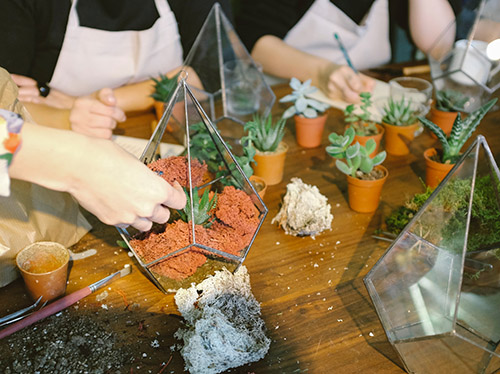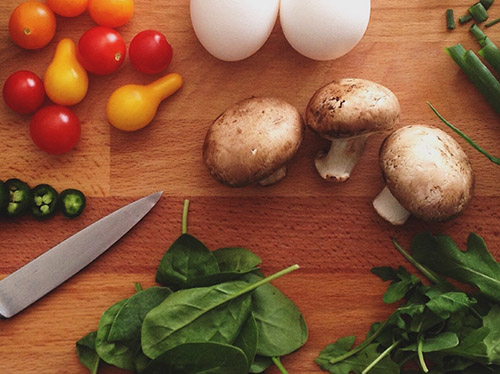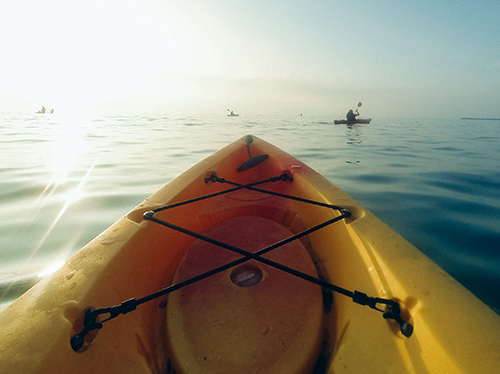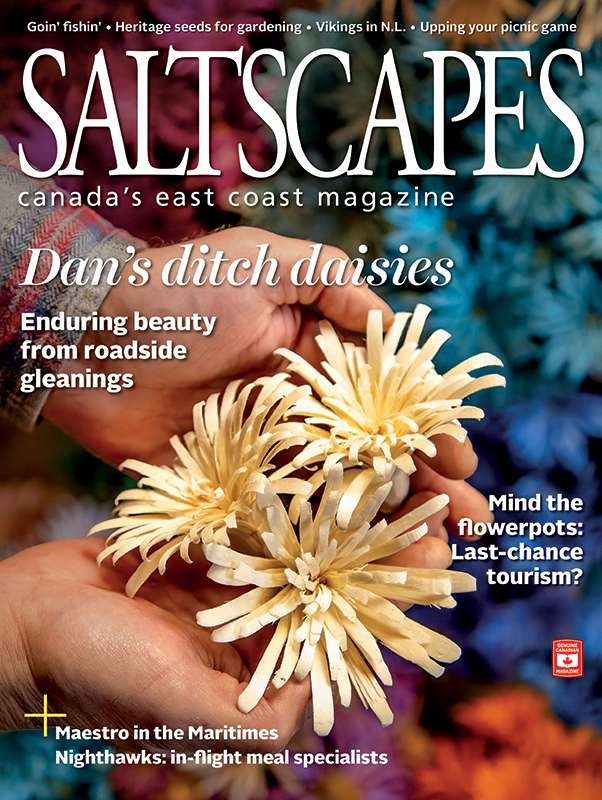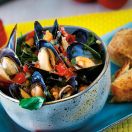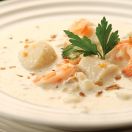East Coast sturgeon: break out the champagne!
As I hold the caviar in my mouth, the flavour intensifies and alters. I taste a bit of salt, a hint of nuttiness, and then I’m overwhelmed by the deep savoury flavour. It’s the essence of the sea, but rich and buttery.
Eventually I swallow and continue to enjoy the sensation. I take a sip of sparkling wine and decide to indulge again. I put another dab of caviar on the back of my hand and eat it right off my skin.
“Caviar should not have to be an acquired taste,” says Dr. Cornel Ceapa of Acadian Sturgeon and Caviar in New Brunswick. “A good caviar, served right, should appeal to everyone.”

Local caviar is cropping up at culinary festivals and restaurants throughout the Atlantic Provinces. You might find the traditional serving of caviar on a piece of dry toast, a slice of cucumber or small buckwheat pancakes, called blinis. East Coast chefs have added a garnish of caviar to oysters on the half-shell—a beautiful melding of two intense flavours of the sea. Caviar served with smoked sturgeon (or smoked salmon) blends salty richness with smoke. Crème fraîche, chopped hard-boiled egg and even a bit of finely diced onion often accompany caviar as well.
At select restaurants and gourmet food shops in Atlantic Canada and online, New Brunswick caviar is sold in small, specially-lined flat tins. Prices begin at $60 per 30-gram tin.
To enjoy the pure flavour of caviar, you can eat it by the spoonful or off the back of your hand—a tradition from Eastern Europe. As the ice-cold caviar receives the warmth from your hand, the intense flavour is released.
There are a few key points to enjoying this luxury. Keep it on ice—even on the table. Also, caviar should never touch metal; a tiny spoon made of mother-of-pearl is the traditional serving utensil. To appreciate the full impact of the flavour, cleanse your palate between tastes. A sip of champagne or vodka are the classic choices, but sparkling wine or sparkling water will do.
Caviar is made from the roe of sturgeon, which has been strained and salted. Making caviar is considered an art, like making a great cheese or fine wine.
Back from the brink
A desire for caviar led to sturgeon being overfished more than a century ago. In the “black gold rush” of the late 1800s (named for the black eggs of Atlantic sturgeon), huge numbers of sturgeon were caught along the east coast of North America. After only seven years of harvesting, species that had survived for millions of years were almost wiped out. The sturgeon fishery collapsed in the Saint John River in 1885 and has never recovered.
Two sturgeon species live in Atlantic Canada. The shortnose sturgeon is a “species of special concern” in Canada and is considered endangered in the US. The only Canadian spawning grounds appear to be in the Saint John River in New Brunswick. Atlantic sturgeon, a threatened species, is found mostly in the Saint John and St. Lawrence Rivers.
Sometimes called “living fossils” or “river dinosaurs,” sturgeon coexisted with dinosaurs and have hardly changed over the last 250 million years. The primitive fish have leathery skin with an armour of bony plates rather than scales. They don’t have backbones and bony skeletons —their skeletons are made of cartilage.
The lives of sturgeon are a bit like those of Atlantic salmon. Sturgeon spend much of their lives in the ocean but return to rivers to spawn. And, like salmon, sturgeon can be farmed.
Ecologically sound
New Brunswick caviar is back on menus, along with smoked, grilled or candied sturgeon. Two companies are farming sturgeon—in land-based tanks. By penning the fish, the aquaculture operators avoid many of the concerns expressed about salmon farming, such as fish lice spreading from salmon to wild fish and water pollution (from feces and/or chemicals) affecting lobster and other wild species.
In Pennfield, NB, halfway between Saint John and the NB-Maine border, lies the home of Breviro caviar. Shortnose sturgeon live in concrete tanks in a structure similar to a greenhouse and are fed modified trout feed. Groundwater is used to fill the tanks and the water is continuously being filtered and recirculated. At Breviro, caviar is produced by five-year-old fish. The caviar and sturgeon, which are certified as sustainably produced by the Ocean Wise program, are sold to local restaurants and exported to the rest of Canada and overseas.
Dr. Cornel Ceapa raises Atlantic and shortnose sturgeon on Saint John River’s Kingston Peninsula. His company, Acadian Sturgeon and Caviar, is not yet selling farmed caviar; currently their products are from wild Atlantic sturgeon caught in the Saint John River, which is controversial given the species’ threatened status. A 2013 Fisheries Department report, however, stated a “maximum commercial harvest of 350 Atlantic sturgeon from the Bay of Fundy population is considered to be sustainable over the short-term (up to five years).” Ceapa is raising both species and a hybrid of the two and eventually will offer farmed sturgeon products.
Sturgeon offers more than just caviar, producing twice as much edible material (roe and meat) per pound as most other fish. A lightly-flavoured but dense meat, similar to pork, sturgeon is often smoked or marinated.
Farm-raised sturgeon provides an ecologically sound and local source of fish. Just one more way to indulge on the East Coast.


